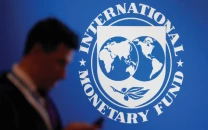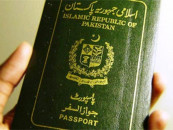Talking out the water dispute
Lahore is hosting a nine-member delegation from New Delhi for two-day talks on the contentious water issues

The Indus Water Treaty — signed by Pakistan and India in 1960 after nine years of consultations mediated by the World Bank — divides the waters of the Indus river system between the two hostile neighbours. Under the Indus treaty, waters of the eastern rivers — Sutlej, Beas and Ravi — had been allocated to India and waters of the western rivers — the Indus, Jhelum and Chenab — to Pakistan. The treaty has survived years of tensions between the two archrivals, including two wars and countless military standoffs. However, several recent steps by India pose a threat to the treaty that is widely regarded as an extremely successful agreement.
In March 2017, India had promised to modify the designs of Pakal Dul and Lower Kalnai projects. To the contrary, it started constructing the two projects without addressing Pakistan’s reservations — as well as a third one, the 850MW Ratle dam — on the River Chenab to redirect water away from Pakistan. Prime Minister Narendra Modi himself laid the foundation stone of Pakal Dul project in May this year, targeted to be completed within 66 months. Baglihar and Kishanganga are two more examples of projects built by India in violation of the 1960 treaty. Pakistan can no more afford to slumber on the vital water issue and needs to act tough. India’s confrontational stance must, alongside, be tackled by energising the arbitration mechanisms existing within the 1960 treaty.
Published in The Express Tribune, August 29th, 2018.
Like Opinion & Editorial on Facebook, follow @ETOpEd on Twitter to receive all updates on all our daily pieces.














COMMENTS
Comments are moderated and generally will be posted if they are on-topic and not abusive.
For more information, please see our Comments FAQ